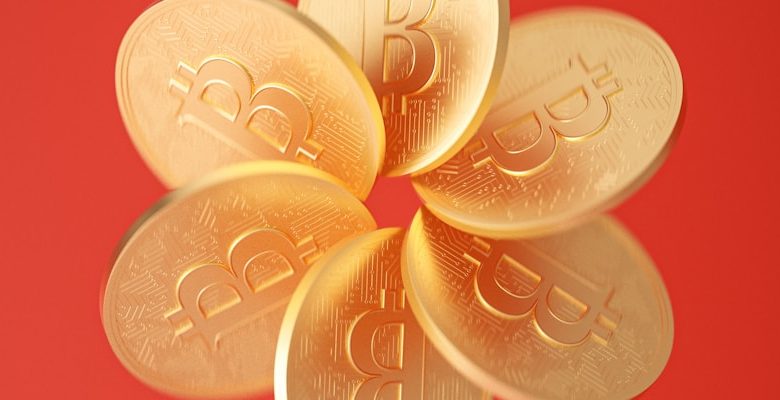What is a Blockchain Fork? Hard Fork vs. Soft Fork Explained

- Understanding the Basics of Blockchain Forks
- Exploring the Differences Between Hard Forks and Soft Forks
- The Implications of a Blockchain Fork on the Cryptocurrency Community
- Pros and Cons of Implementing a Hard Fork in a Blockchain Network
- Navigating the Technicalities of Blockchain Forks: A Comprehensive Guide
- How to Prepare for and Survive a Blockchain Fork
Understanding the Basics of Blockchain Forks
Understanding the Basics of Blockchain Forks
A blockchain fork occurs when a blockchain diverges into two separate paths. This can happen for various reasons, such as changes in the protocol or disagreements within the community. There are two main types of blockchain forks: hard forks and soft forks.
Hard forks result in a permanent split in the blockchain, creating two separate chains that are incompatible with each other. This can lead to a new cryptocurrency being created, as seen with the creation of Bitcoin Cash from a hard fork of Bitcoin. On the other hand, soft forks are backward-compatible upgrades to the blockchain, where only one chain continues to exist.
During a fork, nodes on the network must decide which chain to follow. This decision can be influenced by factors such as consensus among miners, developer support, and user adoption. It’s important for participants in the blockchain network to stay informed about any upcoming forks and be prepared to navigate the changes that may result.
Overall, understanding the basics of blockchain forks is crucial for anyone involved in the cryptocurrency space. By staying informed and being aware of the implications of forks, individuals can make informed decisions about how to proceed in the event of a fork occurring.
Exploring the Differences Between Hard Forks and Soft Forks
When it comes to blockchain forks, there are two main types: hard forks and soft forks. While both types involve a split in the blockchain network, there are significant differences between the two.
A hard fork occurs when a blockchain splits into two separate chains with differing protocols. This type of fork is not backward-compatible, meaning that nodes running old versions of the software will not be able to interact with the new chain. Hard forks typically result in a permanent division in the blockchain network.
On the other hand, a soft fork is a more backward-compatible upgrade to the blockchain protocol. In a soft fork, only a majority of the network’s nodes need to upgrade to the new protocol for the fork to be successful. This means that nodes running older versions of the software can still interact with the new chain, avoiding a permanent split in the network.
One key difference between hard forks and soft forks is the level of community consensus required for each type of fork to occur. Hard forks generally require a higher level of consensus among network participants, as the split is more drastic and can lead to a permanent division in the community. Soft forks, on the other hand, are easier to implement as they only require a majority of nodes to upgrade to the new protocol.
Overall, understanding the differences between hard forks and soft forks is crucial for blockchain enthusiasts and investors. By grasping the implications of each type of fork, individuals can better navigate the ever-evolving landscape of blockchain technology and make informed decisions about their participation in the network.
The Implications of a Blockchain Fork on the Cryptocurrency Community
When a blockchain fork occurs in the cryptocurrency community, it can have significant implications for users and investors alike. Whether it’s a hard fork or a soft fork, the resulting changes can lead to confusion, volatility, and uncertainty in the market.
Hard forks, for example, can result in the creation of a new cryptocurrency altogether, leading to a split in the community and potentially causing a divide in support and resources. On the other hand, soft forks are more subtle changes that are backward-compatible, meaning they do not necessarily lead to a new cryptocurrency but can still impact the network in various ways.
Regardless of the type of fork, it’s essential for users to stay informed and be prepared for any potential disruptions that may occur. This could involve updating their wallets, following new protocols, or even deciding which version of the blockchain to support moving forward.
Overall, the implications of a blockchain fork on the cryptocurrency community are far-reaching and can have lasting effects on the market as a whole. It’s crucial for users to understand the differences between hard forks and soft forks, as well as the potential risks and rewards associated with each type of fork.
Pros and Cons of Implementing a Hard Fork in a Blockchain Network
Implementing a hard fork in a blockchain network has both advantages and disadvantages to consider. It is important to weigh these pros and cons before deciding to proceed with a hard fork.
- Pros:
- 1. Enhanced Security: A hard fork can help address security vulnerabilities in the blockchain network, making it more secure against potential attacks.
- 2. Scalability: By implementing a hard fork, the network can be upgraded to handle a larger volume of transactions, improving scalability.
- 3. Improved Functionality: Hard forks can introduce new features and functionalities to the blockchain network, enhancing its capabilities.
- 4. Community Consensus: Hard forks can be used to build consensus within the community on important changes to the network, ensuring that all stakeholders are on board.
- Cons:
- 1. Divided Community: Implementing a hard fork can lead to a split in the community, with some users choosing to stick with the old network while others migrate to the new one.
- 2. Network Disruption: Hard forks can disrupt the normal operation of the blockchain network, causing temporary instability and potential issues for users.
- 3. Resource Intensive: Implementing a hard fork requires significant resources in terms of development time, effort, and coordination among stakeholders.
- 4. Risk of Bugs: Hard forks can introduce bugs and errors into the network, which may take time to identify and fix, potentially impacting user experience.
Considering these pros and cons is essential when evaluating the decision to implement a hard fork in a blockchain network. It is crucial to carefully assess the potential benefits and drawbacks before proceeding with any changes to ensure the long-term stability and success of the network.
Navigating the Technicalities of Blockchain Forks: A Comprehensive Guide
Navigating the technicalities of blockchain forks can be a complex process. It is crucial to understand the differences between hard forks and soft forks to make informed decisions when faced with a potential fork in a blockchain network.
Hard forks occur when a blockchain splits into two separate chains, often due to a fundamental change in the protocol that is not backward-compatible. This can result in a permanent divergence in the blockchain, leading to the creation of a new cryptocurrency. On the other hand, soft forks are backward-compatible upgrades to the blockchain protocol, where nodes that have not upgraded can still participate in the network.
When a fork occurs, it is essential to consider various factors before deciding which chain to follow. This includes evaluating the level of community support, the development team behind each chain, and the potential impact on the network’s security and stability. It is also crucial to consider the potential risks and benefits of each chain to make an informed decision.
In the case of a hard fork, users will need to upgrade their software to continue participating in the network. This can lead to a temporary disruption in the network as users transition to the new chain. Conversely, soft forks are typically less disruptive, as non-upgraded nodes can still communicate with upgraded nodes.
Overall, navigating blockchain forks requires a good understanding of the technical implications and potential risks involved. By staying informed and carefully evaluating the options available, users can make well-informed decisions when faced with a fork in a blockchain network.
How to Prepare for and Survive a Blockchain Fork
When preparing for and surviving a blockchain fork, there are several steps you can take to ensure that you navigate the process smoothly. First and foremost, it is essential to stay informed about any potential forks that may be on the horizon. Keep an eye on news sources, forums, and social media channels to stay up to date with the latest developments.
Next, it is crucial to ensure that you are in control of your private keys. By holding your private keys, you will have access to your funds on both sides of the fork. Make sure to store your keys securely and consider using a hardware wallet for added protection.
Additionally, consider diversifying your holdings across different wallets and exchanges. This will help to mitigate the risk of losing all your funds in the event of a contentious fork. By spreading your assets out, you can minimize the impact of any potential disruptions.
Finally, be prepared to make a decision about which side of the fork you will support. Do your research, weigh the pros and cons of each chain, and make an informed choice based on your own beliefs and priorities. Remember that there is no one-size-fits-all answer, and what is best for one person may not be best for another.



